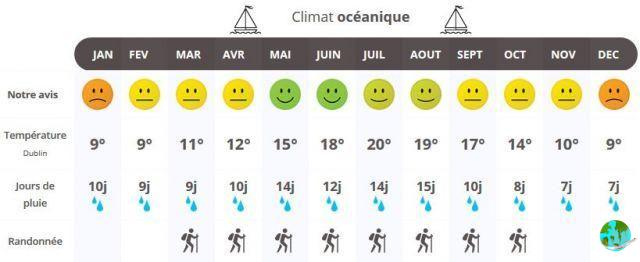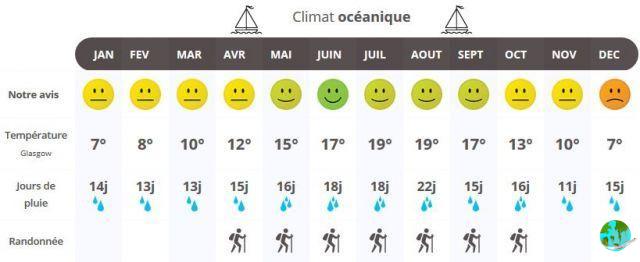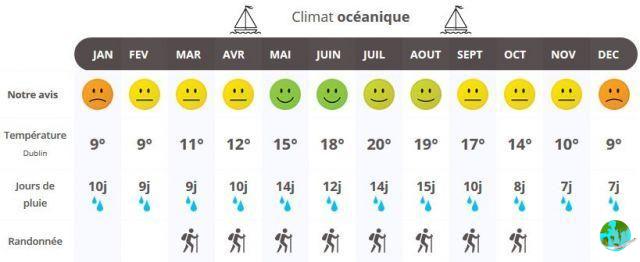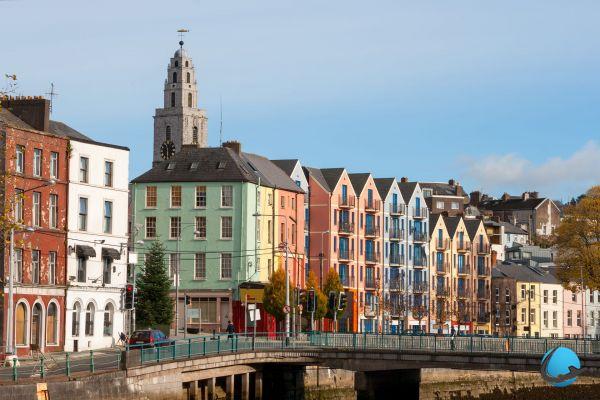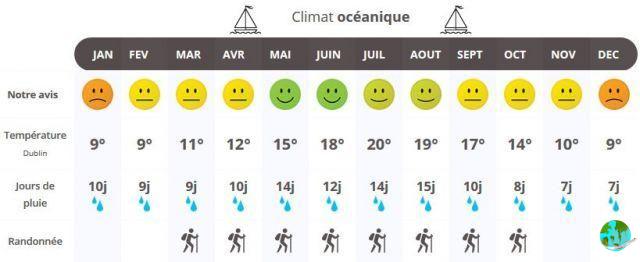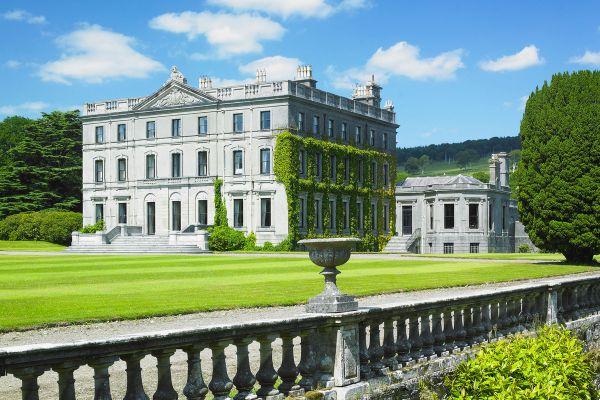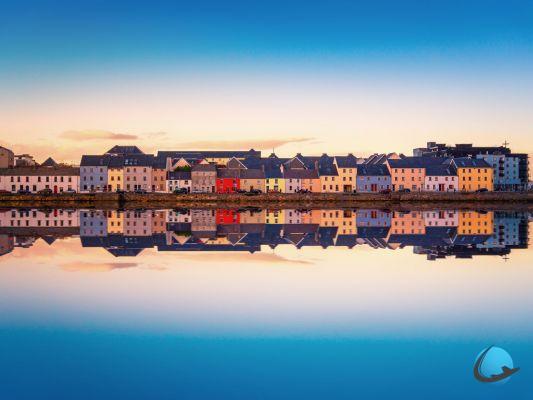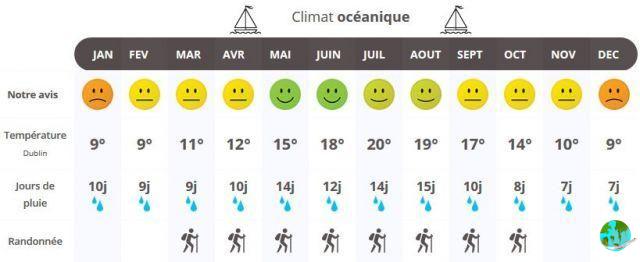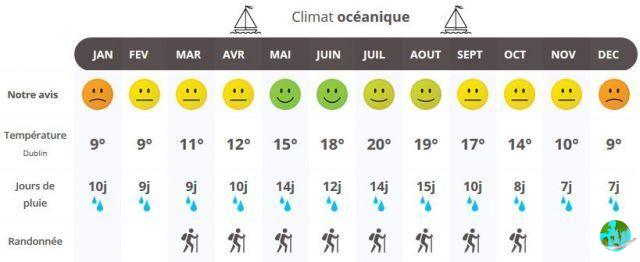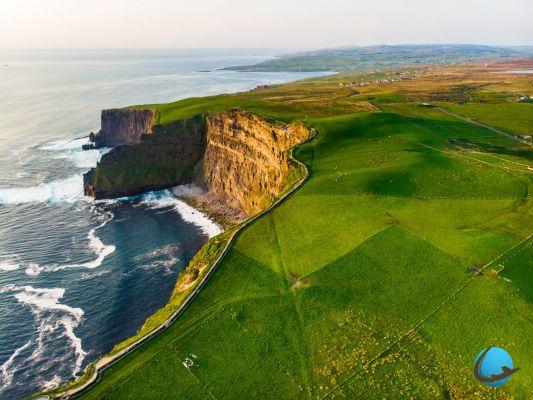
Land of strong history and wild nature, Ireland is also a hospitable country which always extends a frank and spontaneous hand to the traveler. The border between culture and environment is fine here and the easy contact of the Irish, an open door to diving into a preserved world. Visiting Ireland is often experienced as a breath of fresh air, for city-dwellers and an open-mindedness for all… on condition of course that you prepare your trip carefully!
Rich and varied landscapes
Green is undoubtedly the color of Ireland. With an island climate, where good weather quickly follows bad weather, the landscapes are adorned with a pretty soft green which generally makes travelers happy. However, the Giant's Causeway near Belfast allows you to enter a volcanic world. The ground, covered with black basalt, contrasts singularly with the surrounding landscapes.
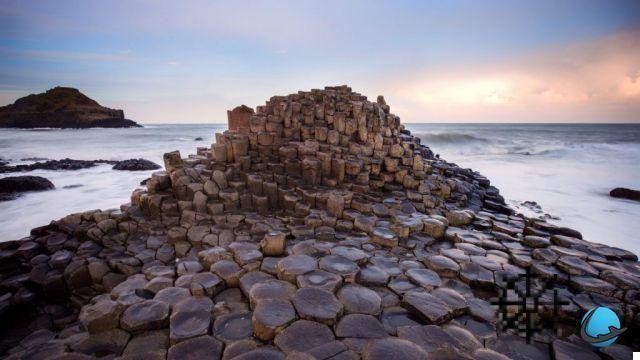 The Giants Causeway
The Giants Causeway
Finally, Connemara, with its lakes and peat, takes you into a peaceful landscape. You will be charmed by the blue, yellow and green colors, the small isolated houses… You can visit these landscapes from Galway. This is Ireland too: changing landscapes that spice up your trip! Green is also a national color. On Saint-Patrick's Day, all Irish people put on their best costumes and it's a veritable tide of green that falls on Dublin, but also on all the towns and villages of the country.
When is the best time to visit Ireland?
Ireland is therefore renowned for its green nature and its immense sea coasts which open it to the world. If these two characteristics are undeniably for a large part in the charm of the island, they are also responsible for an essentially rainy climate. In some areas it can rain for up to 250 days a year! So prefer the summer months if you are allergic to humidity. September is also a good time to go for a walk, as long as the rain gods are with you that year ...
Generally speaking, the weather is changeable and the island nature of the country forces the sun to battle endlessly with the clouds to find a place in the Irish sky. On the other hand, the oceanic climate favors a minimum thermal amplitude and the temperatures will only drop slightly below zero. To visit Ireland with confidence, the months of May and June are ideal, especially if you plan to hike in the country. But you can also try the first months of spring and especially the beginning of autumn, a period rich in festivals of all kinds.
PRACTICAL TIPS : more details on the climate of Ireland.
What budget is to be expected on site?
Reaching Ireland from France can be done easily by plane. The country is the birthplace of one of the most famous low-cost airlines and you can easily find tickets for less than 100 euros in low season, double in summer. On the spot, it will still be necessary to reckon with a significant increase in prices in recent years. Transportation in particular can be quite expensive. The bus ticket varies between 2,5 and 3,5 euros, the daily car rental between 20 and 85 euros for example. Accommodation is also quite expensive, with prices that can go up to 150 euros for a mid-range hotel! In return, many youth hostels have sprung up in the big cities, offering cheap shelter to the countless backpackers who crisscross the country.
Catering can also show high prices. A lunch or a dinner cost respectively and on average 15 and 30 euros per person. If you can, go to supermarkets and cook your own meals… it will cost you about the same price as in France. Finally, note that the vast majority of prices change depending on the region and especially the season. If you plan to go in the summer, be proactive and book your accommodation and tickets in advance, or visit Ireland at full price!
How to get to Ireland from France?
The fastest and most economical way to reach the land of the korrigans is to book a plane ticket. Ryan Air regularly offers return tickets for less than 100 euros, while traditional companies rarely sell tickets for less than 200 euros. Again, it all depends on the season, the crowds and your ability to anticipate! It is also possible to take the Eurostar to cross the Channel, reach London then head towards Dublin. The Paris-London return trip will cost you at least 40 euros, while the train and ferry connection to reach the Irish capital will cost you more or less the same amount.
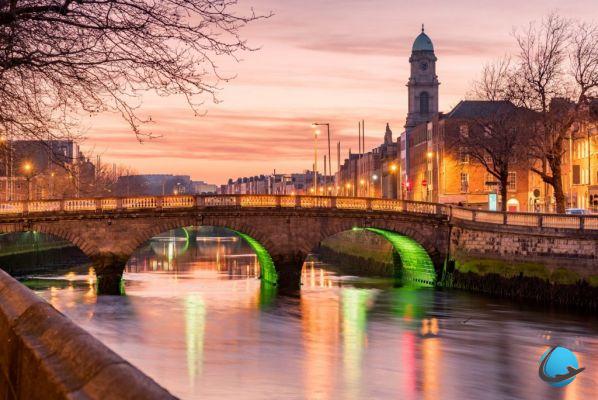 Dublin
Dublin
This trip will therefore cost you approximately the same price as a low-cost plane ticket but the trip will be much longer: 8 hours by Eurostar-train-ferry compared to 1h40 by plane! Those who really like to take their time can even choose an option that is even more bucolic. The Irish Ferries company offers trips to Ireland from Cherbourg, for around 90 euros, and even 50 euros during the promotion period. It will still take a minimum of 15 hours of travel, but you can then take advantage of your car on site to visit Ireland at your own pace!
How to get around the country?
To visit Ireland, the road is the ideal way. Localities and points of interest are sometimes very distant from each other and spaced by large expanses of rural areas. To reach the most remote corners, the rental car is perfect. Autonomy, relatively affordable prices if you are more than one, it combines all the advantages! Be aware, however, that the public bus company Eirann offers many trips between major cities with multiple stops in inland villages.
However, private bus companies offer more comfort and ease. More direct, the routes offered will allow you to reach Cork, Galway or Limerick quickly from Dublin and its international airports, for around fifteen euros. The train is more expensive and its network less extensive, but it offers the advantage of discovering the magnificent rural landscapes of the country. Finally, we can also consider joining two large cities by sea and thus afford an all-inclusive cruise with stops and excursions to the main centers of interest in cities such as Cork or Dublin.
What are the gastronomic specialties of Ireland?
Visiting Ireland is also an opportunity to understand the local culture through the angle of gastronomy. A rich terroir and living traditions make it possible to taste many specialties, such as the Irish Stew, a tasty lamb stew with carrots, potatoes and cabbage. It is served in all respectable pubs. Guiness Pie is the perfect combination of the flavor of legendary beer and guaranteed satiety. At Beef, you're guaranteed to get your money's worth. The Sheperd’s Pie is a kind of shepherd's pie, always so invigorating, and available with beef or lamb.
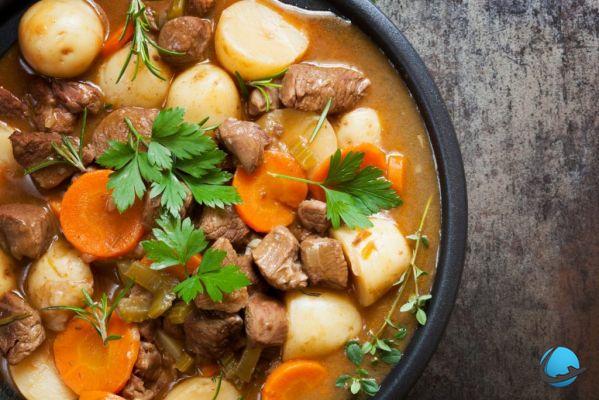 L’Irish Stew
L’Irish Stew
For lovers of iodized flavors, we recommend the Seafood Chowder. This fish soup prepared from the catch of the day, mainly haddock, salmon or hake, and simmered with fresh vegetables, will be perfect to pass the rainy days. For breakfast or afternoon tea, we won't miss the essential Scones. These simple but comforting little pastries, accompanied by jam or butter will be sure to fall for you. Finally, do not miss the opportunity to warm up with a good Irish Coffee. Whiskey, coffee, cream and sugar, what happiness in short!
What about Guinness? Discover the national drink!
If wine is traditionally associated with France, Guinness is undoubtedly linked to Ireland. During your stay, it will be almost impossible not to go out to a pub. It is in these very dark bars that the plots for the independence of Ireland were fomented.
Even today, they are the place of life par excellence, the place where men and women like to go out. Guinness in hand, we comment on the news, we ignite for football or rugby matches. Many concerts take place in these pubs, and everyone sings the hits of U2, the great Irish rock band. And as you will notice, the irish are excellent singers, which take up with fervor many refrains.
In which part of Ireland to stay during your stay?
Visiting Ireland can serve a variety of purposes. Before leaving and booking your accommodation, you should therefore ask yourself what your priorities are. The capitals Dublin and Belfast are generally chosen for their nocturnal dynamism and the many historical outings they offer. Street-art, museums and pubs, everything is there to entertain the tourist in search of encounters and culture! Nature lovers will orient themselves more towards Connemara and its famous lakes. In this case, the ideal base is Galway, a stone's throw from the region, but also the Aran Islands, the Cliffs of Moher and the Poulnabrone Dolmen.
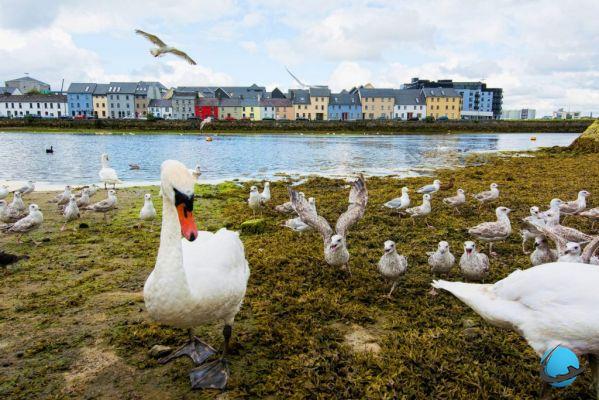 Galway
Galway
Kerry region, in the South-West, is just as conducive to wonder. The Dingle Peninsula and the Skellig Islands offer magnificent views of the Atlantic and endless greenery. Accommodation can also be found in Cobh, not far from Blarney Castle. Finally, those who wish to visit Northern Ireland, and in particular the Giant's Causeway, can stay on the side of Londonderry, less crowded than Belfast but just as hospitable.
What are the best places to visit in Ireland?
Ireland is a land of legends. There, we believe in Celtic myths, fairies and elves. In the gardens of Blarney Castle, near Cork, you can see the Witches' Kitchen or the Druid Circle. Here are some must-see tours of Ireland!
Blarney Castle
Blarney Castle is well known for the Stone of Eloquence. Kissing this stone will allow you to erase your shyness and know how to speak in public. Visit the park that surrounds Blarney Castle, it allows you to take a very pleasant stroll among the Celtic legends and myths.
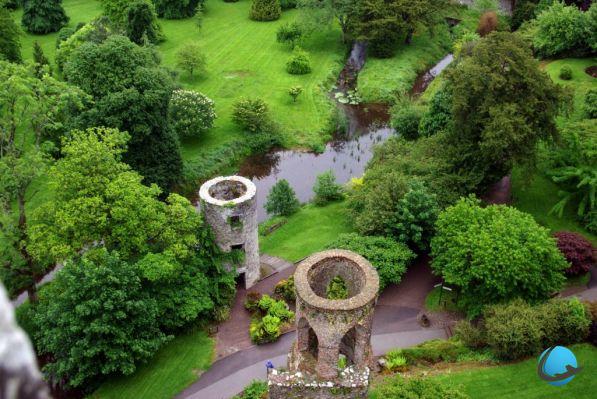 The surroundings of Blarney Castle
The surroundings of Blarney Castle
Temple Bar
Temple Bar is Dublin's super tourist district. Place of life par excellence, this is the place to go out, especially at night. It's impossible to visit Dublin without going through Temple Bar: the area is full of the best pubs in the capital!
Connemara National Park
Connemara National Park is a must-see for anyone touring the country. Visit the park house and learn more about peat formation and on flora and fauna that inhabit these wetlands.
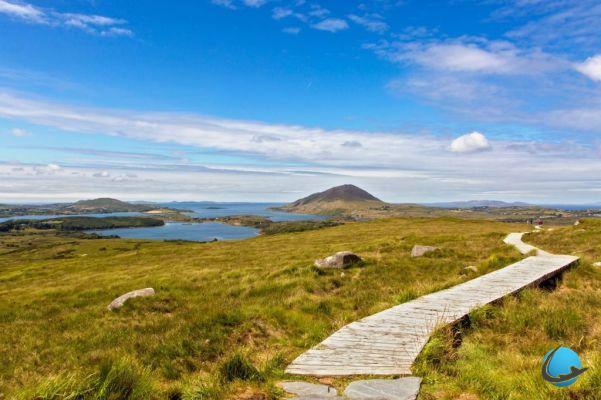 Connemara Park
Connemara Park
The Giant's Causeway
Located near Belfast, the Giant's Causeway is the result of a volcanic eruption from a few million years ago. This gave spectacular basalt landscapes, very touristy.
What to bring back from Ireland on a shopping spree?
From Ireland you will come back with a head full of pictures and pictures by the hundreds. However, when the traditional shopping time comes, you will be hard pressed to know which souvenir to buy for your loved ones. We offer you some tips for a successful shopping session!
Celtic culture
If there is a Celtic country beyond Brittany, it is Ireland! Also, do not hesitate to report memories linked to Celtic beliefs. Obviously, the famous Celtic cross, but also the objects showing Celtic characters, often little elves.
Saint-Patrick's Day also inspires many artists who redecorated many objects in green. Whether it's t-shirts or sweaters, signs, card games or soft toys, you will have no trouble making your loved ones happy!
Woolen
If you push to Aran Island, consider buying on the spot warm clothes that the Irish have made a specialty of. These traditional woolen clothes have been improved and mixed with cashmere, for the greater comfort of those who are offered a sweater or scarf.
Porcelain and crystal
If you have a well-reinforced suitcase, buy some Belleek porcelain or Waterford crystal, the factories of which are located east of Cork. You will find many crystal artefacts in the Galway and Tipperary area. These are finely crafted objects, but not necessarily bulky. Bring back some coins for your family or friends!
Gastronomy
There are many food items to bring back from Ireland. For tourists passing through Cork, you will have to stop at the English market to find what you are looking for. Salted butter products, like caramels, are infinitely sweet. Others, flavored with Irish whiskey, are aimed at gourmets: they are the toffees.
As for drinks, take advantage of a visit to a distillery to bring back a good bottle of whiskey. If canned beer doesn't put you off, buy Guinness or, more original, Murphy. Finally, a bottle of Irish Coffee cold will find a special place in your suitcases!
Useful information
To best prepare your vacation in Ireland, we provide you with our practical information:
- Formalities: For European nationals, a simple identity card or a valid passport is sufficient to visit Ireland.
- Health : No compulsory vaccine. You can take your European health insurance card with you.
- Cash : Ireland being part of Europe, the currency is therefore the Euro.
Are you planning a trip to Ireland soon? Or do you already know the country? Let's talk about it in the comments to exchange tips!




